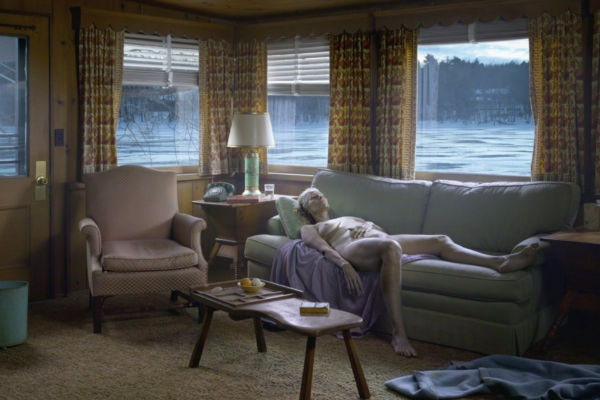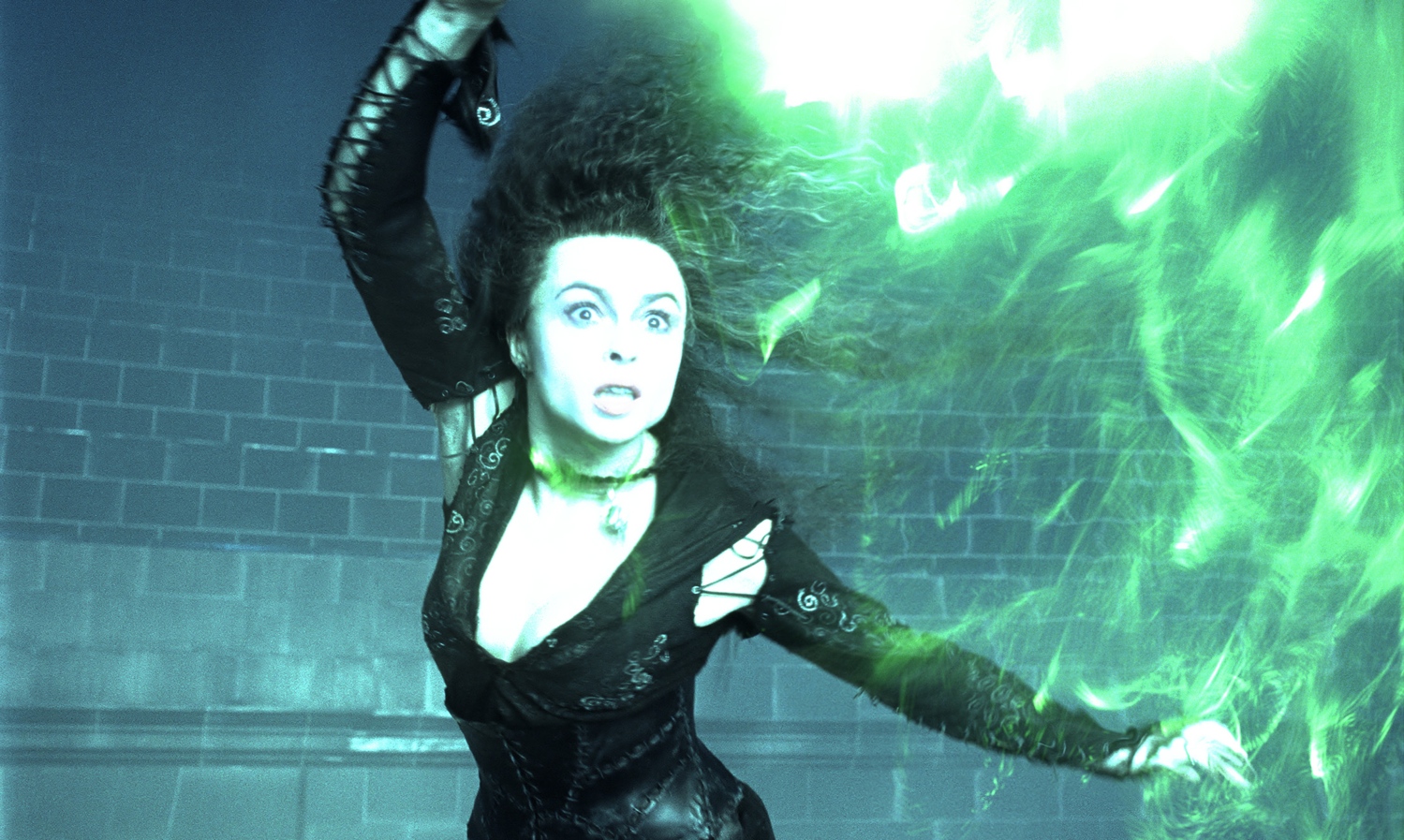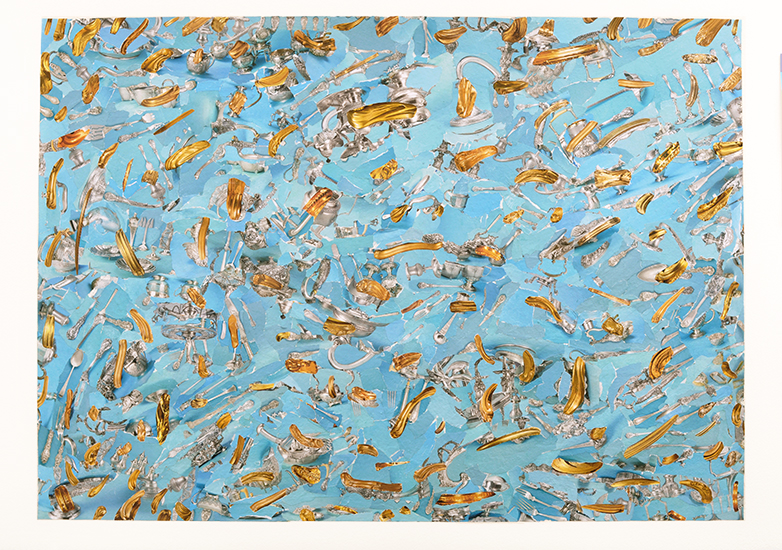
It has been nearly two years since Gregory Crewdson’s Cathedral of the Pines debuted at Gagosian Gallery in New York City, and as the photographs travel to new countries and galleries with their artist, I revisit my initial impressions of them, wondering how they settle into our world as they continue to swell in prominence and burgeon imaginations.
Known best for his series Twilight and Beneath the Roses, Crewdson has been, unquestionably, one of the most influential photographers of our time. A first impression of his work – and those elements of his that have tended to characterize it best – includes a Lynchian-suburban sensibility, Hopper-postured character, and a Hitchcockian suspended dread. Crewdson has mentioned these fellows as some of his greatest influences, but the viewer might surmise it anyway. He operates in small town America, depicting the lives of the people who live there and the landscapes that encompass them.
On the occasion of its opening night, I noted that Cathedral of the Pines contained less of these trademark post-industrial settings. Taking place in the Berkshires – his home for the past several years – I felt less the aftermath of industry and more industry’s moody reverberations.
Crewdson is deft at provoking our anxieties, at exploring human psychology through scenes of the fantastic in suburbia, of alienation in the everyday. His focus in Cathedral, by contrast, reveals hopefulness in the face of stasis and escapism through soft-edged shadow and panoramic breadth of the nature surrounding the characters in each photograph.
The dwarfing of humans in the Berkshires landscape provides the viewer with a sense that one might find solace in exposure, inverting notions of domestic comfort and outside danger. This notion conjures Caspar David Friedrich’s Evening or Thomas Cole’s Distant View of Niagara Falls, both in which ant-sized humans wander vast, idyllic and rugged swaths of land.
In the same vein, Crewdson’s photographs in Cathedral depicting the inside of people’s private homes lack the social cues of hearth and home that outdoor places embody. These interior spaces seem to act as cool anchoring devices before primordial spaces: sweeping frozen lakes, wintering birches, pines seen through their windows and doors. What appears to the viewer as organic, atmospheric lighting in siennas and blues is what significantly separates this series from Crewdon’s previous works, which are often saturated in harsher Technicolor electric blues and purples.
The colors of his earlier work have always seemed to draw out the fantastical and supernatural elements in the photographs. In Cathedral, those most noticeable elements have gone into hiding, have been engrained so heavily into the atmosphere that they’re rendered unnoticeable. This is an occasion of Crewdson-meets-Crewdson. An intrusive spotlight from the sky has become a soft gesture of shadow and snow, morning light and couch cushion.
Crewdson has discussed how his work attempts to capture “the dynamic between beauty and sadness that we experience continuously.” Cathedral offers an oneiric but pragmatic reenvisioning of this problem. One sees here photographic moments suspended in melancholic actualization. I have a strong conviction that this series is suspended not in horror but in possibility. I’m reminded of the title of that Flannery O’Connor story, as if everything that rises must converge. There is a kindness, a forgiveness in the photographs that is very quiet, but that is, really, the undercurrent of every experience I’ve had studying them.
Also apparent is a return-to-nature narrative that, beyond being explicit in this new series, was noted by Crewdson himself in his sole New Yorker article, in which he writes that after moving to the Berkshires following a string of hardships, “nature became my refuge – the one place where my existence didn’t feel punitive.” There is something in this sentence that catches me each time I read the essay: nature as “one place”, as being a whole that opposes the entire scope of civilization. Nature as “one place” is conceptual, can be a collective experience summarized by its personal components.
Crewdson’s unobtrusive characters – hands furling over edge of sink, body steeping toward couch cushion, dazed and halted outside the toolshed – they seem to have traveled a long way from wherever and arrived at the dawn of contemplation, their “one place”, which is really no end, but a mere opening breath of the first mile of the way. All of Crewdson’s characters are unified by this “one place”.
Maybe we’re at this one place too, perched together on the edge of a new way of being, dismissing those who cannot independently realize the unquantifiable value of other people; I see it in the papers. I wonder, do you? ◊
Naomi Falk is an essayist from Mukilteo, Washington. She has just graduated as a teaching fellow from Columbia University’s MFA program with a concentration in nonfiction and lives and works in New York City.




